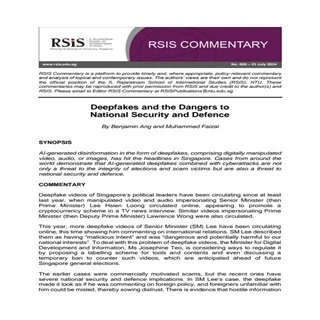By The Children's Commission of the UK
“Maybe young girls will not post what they want to post or do something they would like to do just in case there’s this fear of ‘Oh I might be abused, this might be turned into a bit of sexual content’ when it shouldn’t have been.” – Girl, 17, focus group Generative Artificial Intelligence (GenAI) is transforming the online world. AI models can generate text, images, videos, and hold conversations in response to a handful of prompts and are rightly being seen as a development with huge potential for the enhancement of people’s lives. However, these tools are also being misused at an alarming cost to children’s online and offline safety. ‘Nudification’ tools are apps and websites that create sexually explicit deepfake images of real people, and at the time of writing, this technology is legal in the UK. GenAI, which is often free to use and easy to programme, has supercharged the growth of these tools. Despite this being a relatively new technology, the high risk of harm it presents to children is increasingly evident. Children told the Children’s Commissioner’s Office (CCo) team that the very existence of technology, that could strip people of their clothes, frightened them. In a series of focus groups held with children in their schools (quoted throughout this report), the team heard girls describe how they were trying to reduce the chance of featuring in a sexually explicit deepfake by limiting their participation in the online world- a space which could enhance their social lives, play and learning, if it were safe for them. This report identifies the threat that sexually explicit deepfake technology presents to children. Currently, it is illegal to create a sexually explicit image of a child. Yet, the technology that is used to do so remains legal and accessible through the most popular parts of the online world, including large social media platforms and search engines. After analysing what is known about this new technological threat, assessing what it looks like in the online landscape, and speaking to children about what it means for them, this report has found: • Nudification tools and sexually explicit deepfake technologies present a high risk of harm to children: o Nudification tools target women and girls in particular, and many only work on female bodies. This is contributing to a culture of misogyny both online and offline. o The presence of nudification technology is having a chilling effect on girls’ participation in the online world. Girls are taking preventative steps to keep themselves safe from being victimised by nudification tools, in the same way that girls follow other rules to keep themselves safe in the offline world – like not walking home alone at night. o Children want action to be taken to tackle the misuse of AI technology. One girl questioned what the point of it was, if it only seemed to be used for bad intentions: “Do you know why deepfake was created? Like, what was the purpose of it? Because I don't see any positives” – Girl, 16. • Nudification tools and sexually explicit deepfake technologies are easily accessible through popular online platforms o Search engines and social media platforms are the most common way that users access nudification apps and technologies. o GenAI has made the development of nudification technology easy and cheap. o Open-source AI models that are not primarily designed to create overtly sexually explicit images or videos still present a risk of harm to children and young people The Children’s Commissioner wants GenAI technology, and future AI technology, to be made safe for children, and calls on the Government to: 1. Ban bespoke nudification apps. 2. Bring in specific legal responsibilities for the companies developing GenAI tools to screen their tools for nudifying risks to children and mitigate them. 3. Provide children with an effective route to have sexually explicit deepfake images of themselves removed from the internet. 4. Committo making the online world safer for girls, by recognising sexually explicit deepfake abuse - and bespoke services used to carry this out - as acts of violence against women and girls
London: The Children's Commissioner, 2025. 34p.









